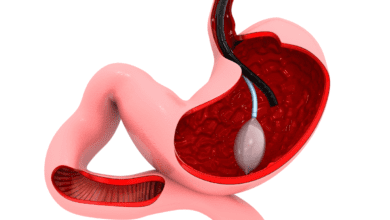Revision Bariatric Surgery: When and Why Is It Needed?

Revision bariatric surgery isn’t a failure—it’s a second chance. If your first procedure didn’t go as planned or your health needs have changed, revision surgery may help you reach your weight loss goals and regain control of your life.
Bariatric surgery has transformed the lives of millions, helping patients overcome obesity and improve their health. However, not every weight loss surgery delivers the expected long-term results. In some cases, patients may experience complications, weight regain, or persistent symptoms. That’s where revision bariatric surgery comes into play.
Whether you’re considering your first procedure or you’ve had one already, understanding revision bariatric surgery can help you make informed decisions about your weight loss journey.
What Is Revision Bariatric Surgery?
Revision bariatric surgery refers to a second (or sometimes third) surgical procedure performed to correct, enhance, or reverse the effects of a previous weight loss surgery. It’s typically done when:
- The initial procedure didn’t result in sufficient weight loss
- The patient regains significant weight over time
- Complications such as acid reflux, strictures, or ulcers arise
- There’s a need to convert one type of surgery to another (e.g., from gastric band to sleeve)
Revision surgery is more complex than the original procedure and requires an experienced bariatric surgeon with expertise in dealing with altered anatomy and previous surgical interventions.
Common Types of Revision Bariatric Procedures
Depending on the patient’s condition and the type of previous surgery, revision bariatric surgery can take several forms:
1. Gastric Band to Gastric Sleeve or Bypass
Adjustable gastric bands often fail to provide long-term weight loss. Many patients have them removed and converted to a more effective procedure like gastric sleeve or gastric bypass.
2. Sleeve Gastrectomy Revision
Some patients may regain weight after a sleeve procedure due to stretching of the stomach. A common revision is converting the sleeve into a gastric bypass or duodenal switch.
3. Gastric Bypass Revision
In rare cases, the bypass pouch may enlarge or complications like dumping syndrome may occur. Surgeons may reduce the pouch size, lengthen bypass limbs, or revise the connection between the stomach and intestine.
4. Gastric Balloon Removal and Conversion
Since gastric balloons are temporary, some patients may choose a permanent revision surgery like a sleeve or bypass after balloon removal.
When Is Revision Bariatric Surgery Needed?
While every case is different, here are the most common reasons patients seek a revision:
- Insufficient Weight Loss: When patients lose less than 50% of their excess body weight.
- Weight Regain: After initial success, some may regain 10–30% or more.
- Medical Complications: Including GERD (acid reflux), nutritional deficiencies, or hernias.
- Mechanical Problems: Like pouch enlargement, band slippage, or leaks.
- Lifestyle or Eating Challenges: If the initial surgery no longer aligns with current eating habits or health needs.
Is Revision Bariatric Surgery Risky?
Yes, revision bariatric surgery is generally more complex than the primary procedure. It carries higher risks of:
- Bleeding
- Infection
- Leakage at surgical sites
- Nutritional complications
- Longer recovery times
That’s why it’s crucial to work with a board-certified, experienced bariatric surgeon and a supportive multidisciplinary team for pre-op and post-op care.
Benefits of Revision Bariatric Surgery
Despite the risks, many patients experience excellent outcomes after revision surgery. Benefits include:
- Improved and sustained weight loss
- Relief from complications of the original surgery
- Better management of obesity-related conditions like diabetes, sleep apnea, and high blood pressure
- Enhanced quality of life and renewed motivation
What to Expect During Recovery
Recovery from revision surgery depends on the type of procedure and the patient’s overall health. Generally:
- Hospital stay may be slightly longer (2–4 days)
- Return to normal activities in 2–3 weeks
- Gradual reintroduction of solid foods over several weeks
- Lifelong nutritional supplements and follow-up required
Support groups, counseling, and dietary guidance are vital to long-term success.





